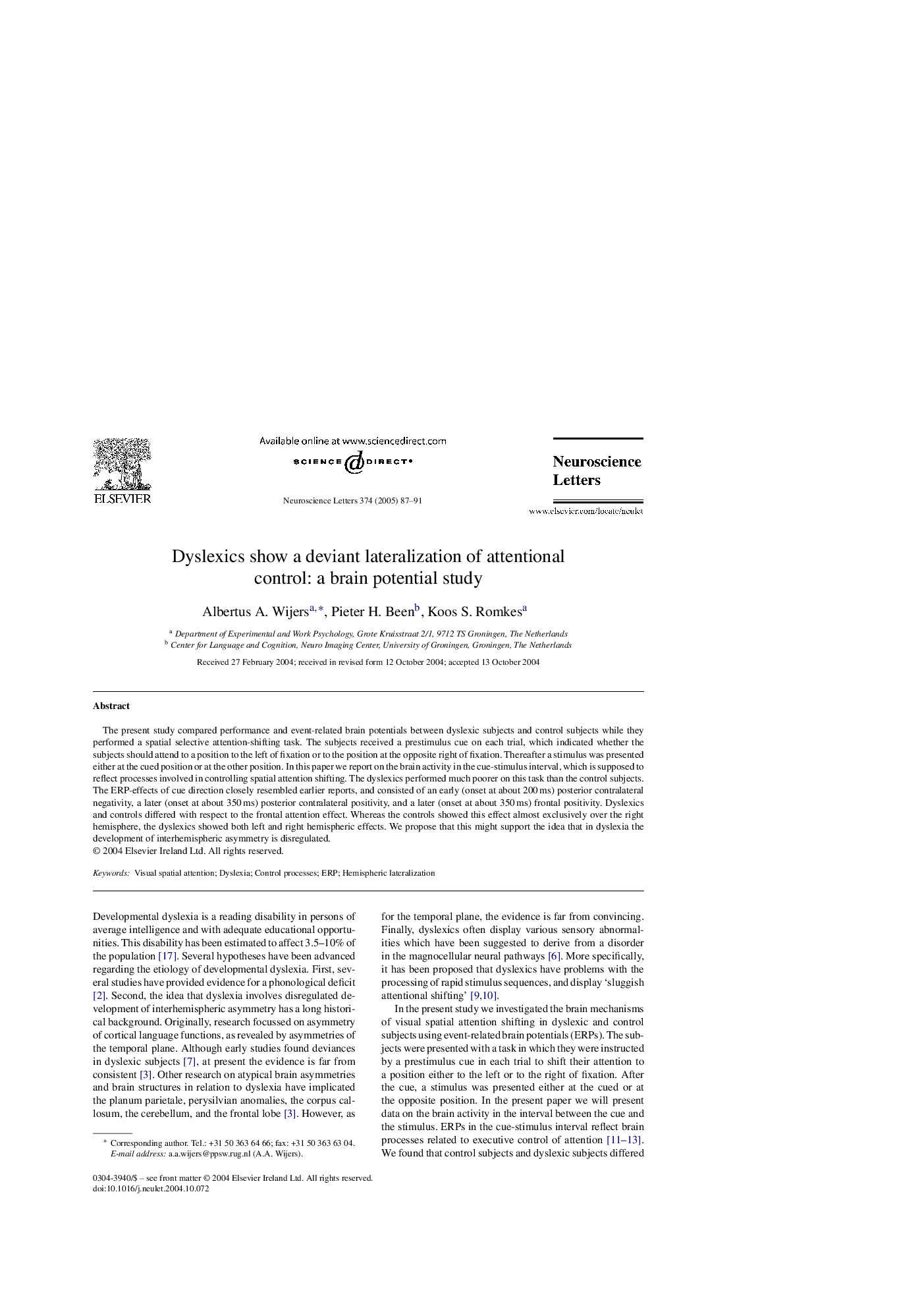| Article ID | Journal | Published Year | Pages | File Type |
|---|---|---|---|---|
| 9429803 | Neuroscience Letters | 2005 | 5 Pages |
Abstract
The present study compared performance and event-related brain potentials between dyslexic subjects and control subjects while they performed a spatial selective attention-shifting task. The subjects received a prestimulus cue on each trial, which indicated whether the subjects should attend to a position to the left of fixation or to the position at the opposite right of fixation. Thereafter a stimulus was presented either at the cued position or at the other position. In this paper we report on the brain activity in the cue-stimulus interval, which is supposed to reflect processes involved in controlling spatial attention shifting. The dyslexics performed much poorer on this task than the control subjects. The ERP-effects of cue direction closely resembled earlier reports, and consisted of an early (onset at about 200Â ms) posterior contralateral negativity, a later (onset at about 350Â ms) posterior contralateral positivity, and a later (onset at about 350Â ms) frontal positivity. Dyslexics and controls differed with respect to the frontal attention effect. Whereas the controls showed this effect almost exclusively over the right hemisphere, the dyslexics showed both left and right hemispheric effects. We propose that this might support the idea that in dyslexia the development of interhemispheric asymmetry is disregulated.
Related Topics
Life Sciences
Neuroscience
Neuroscience (General)
Authors
Albertus A. Wijers, Pieter H. Been, Koos S. Romkes,
